“Once you discover that real pirates are more interesting than fictional ones, you can’t look away.” – Robert Kurson, American author

San Francisco de Campeche
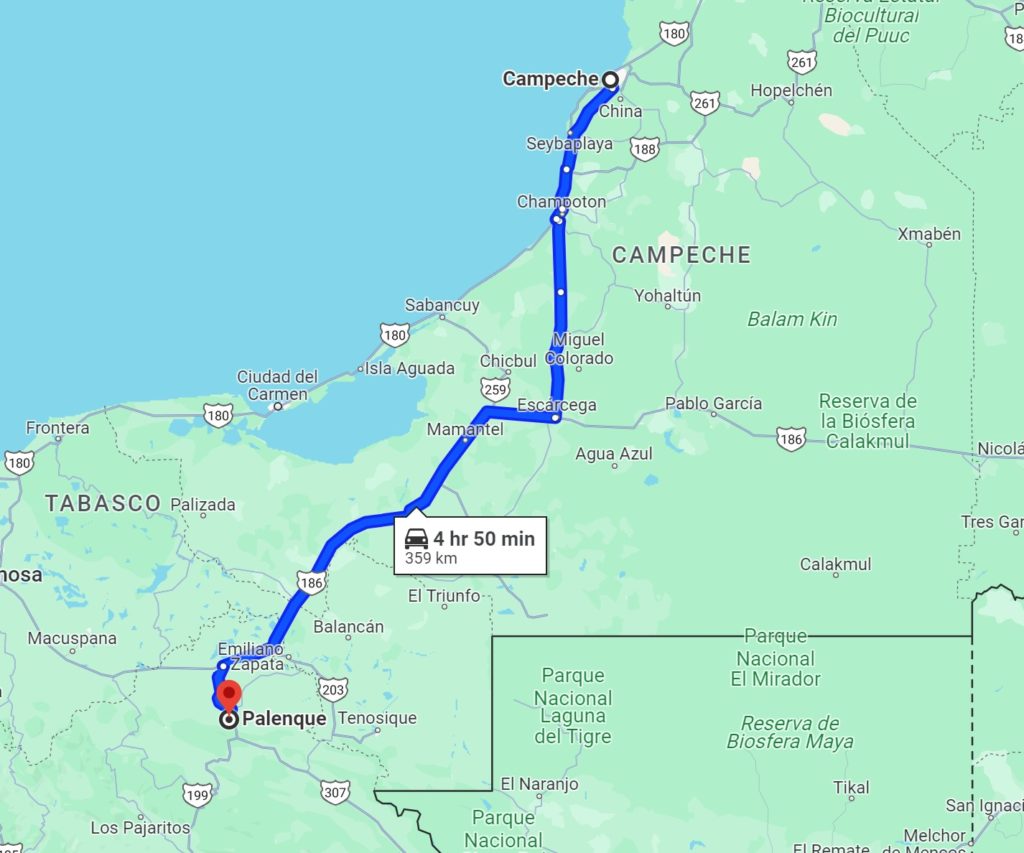
Campeche, the city and the namesake of our sixth Mexican state was a layover as we continued our bus tour up into the Yucatán Peninsula. Officially known as San Francisco de Campeche, it sits on the shore of the Bay of Campeche in the Gulf of Mexico. The city was founded in 1540 by Spanish conquistadores atop the pre-existing Mayan city of Can Pech, though little trace remains of the Pre-Columbian city.

The city retains many of its old colonial Spanish city walls and fortifications which protected the city from those darn pirates and buccaneers. Arrgh! The city was ransacked several times over the years by a glorious Who’s Who list of them throughout the 17th and 18th-centuries. Its architectural quality and state of preservation has earned it the status of a World Heritage Site in 1999.
Campeche is (along with Quebec City) one of the only cities in North America with most of its old city walls intact. Originally, the Spaniards lived inside the walled city, while the indigenous Maya people lived out in the surrounding barrios, where they still retain their original churches; the one in Barrio Guadalupe is almost 500 years old.


A quick stroll was made upon arrival, and then again, bright and early the next morning, when few were out and about. The colonial architecture was impressive as we immersed ourselves in the Spanish roots of this beautiful city-by-the-bay (such as the other famous San Francisco “City-by-the-Bay”).
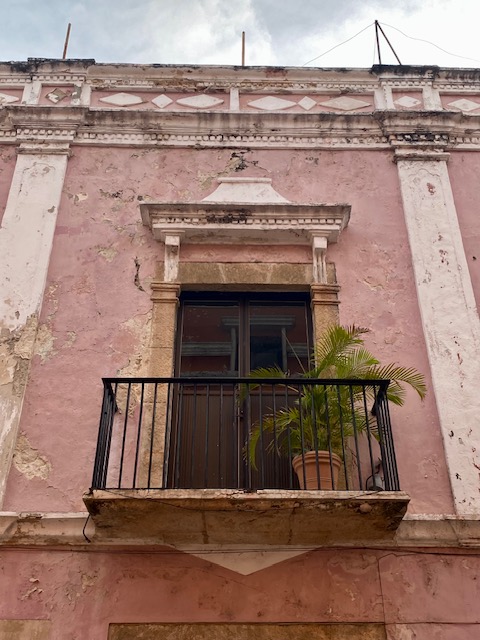





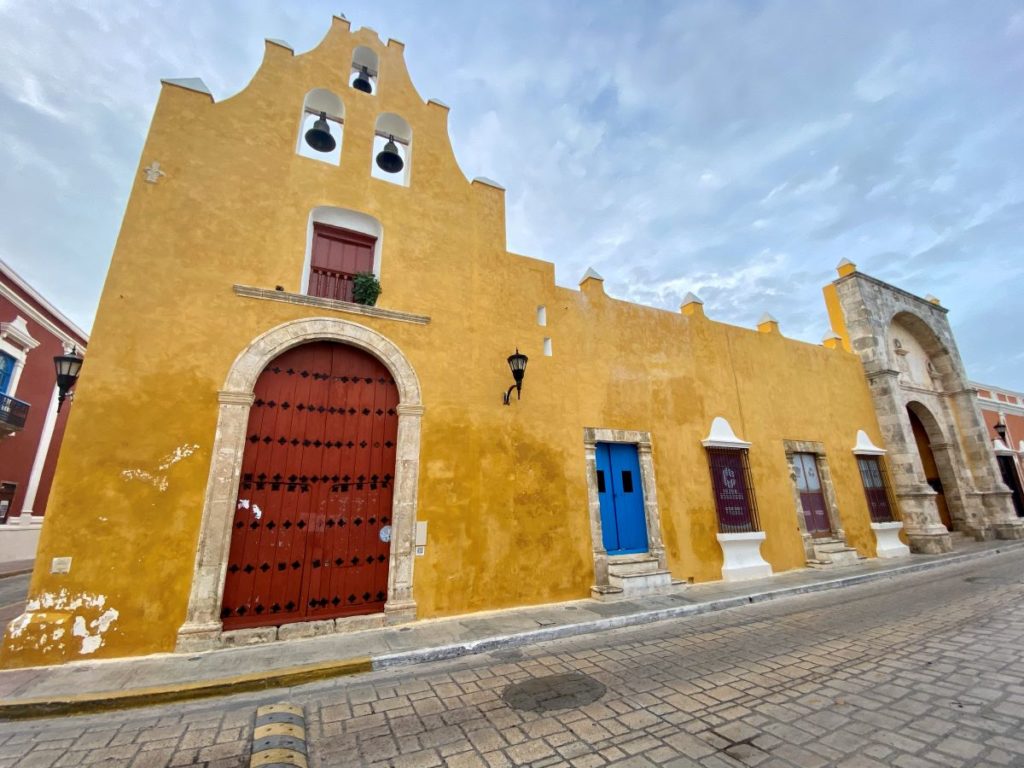
There is not much to see in this city except meander through its beautifully kept, colonial architecture and admire its beauty.
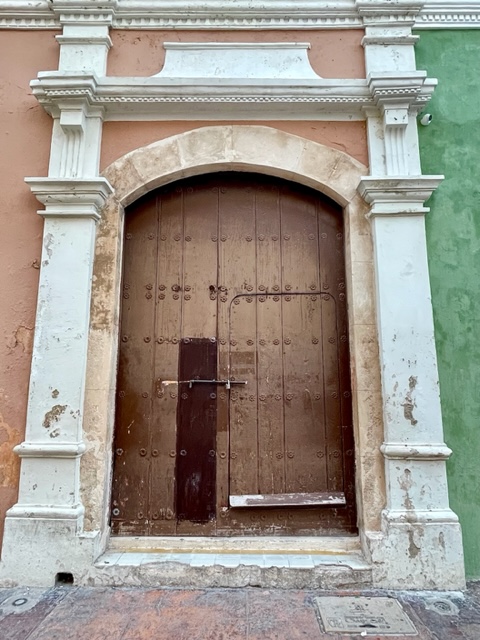





Cochinita Pibil
If you come to the Yucatán, and do not experience the flavors of Cochinita Pibil, you haven’t visited the Yucatán. Its fragrant aroma drifts out of every little restaurant and stand that you walk by, tempting all comers.
Cochinita means piglet/baby pig in Spanish, so a true Cochinita Pibil involves roasting a whole suckling pig. Traditionally, it’s buried in a pit with a fire at the bottom to slowly roast it.
Alternatively, pork shoulder (butt roast), or pork loin is used. The high acid content of the marinade and the slow-cooking time tenderizes the meat, allowing for what are otherwise tough pieces of meat.
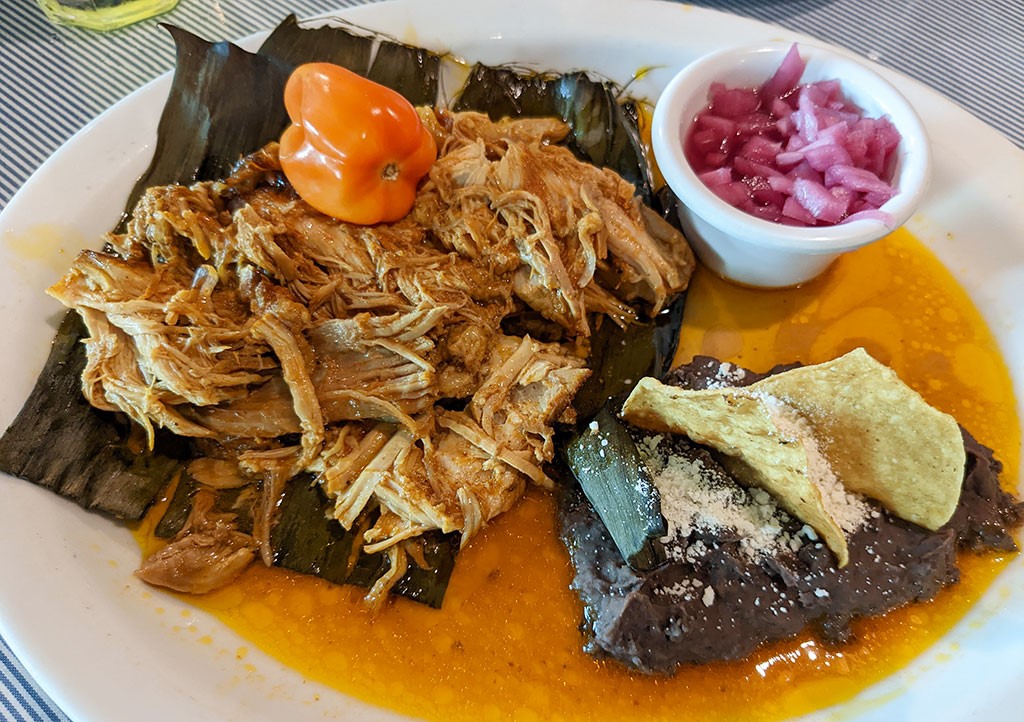
The Yucatán recipes always use the juices of Seville or the local bitter oranges for marinating. In areas where bitter oranges are not common, the juice of sweet oranges can be combined with lemons, limes, or vinegar to approximate the effect of the bitter orange on the meat.
Another important ingredient in all Pibil recipes is achiote (annatto seed paste), which gives the dish its characteristic deep color and adds to the flavor. It’s usually eaten with side dishes such as: yellow corn tortillas, red pickled onions, refried black beans and habanero chilies.
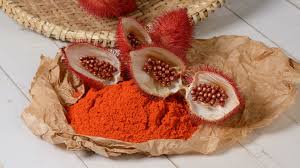
As par for the course, David selects our dining venues. Marganzo Restaurante is considered one of Campeche’s best; located in the heart of the historic center, in a beautiful colonial building that was once a casona (mansion). At night, the façade is beautifully lit up. Of course, being a short walk from the waterfront, it specializes in seafood.
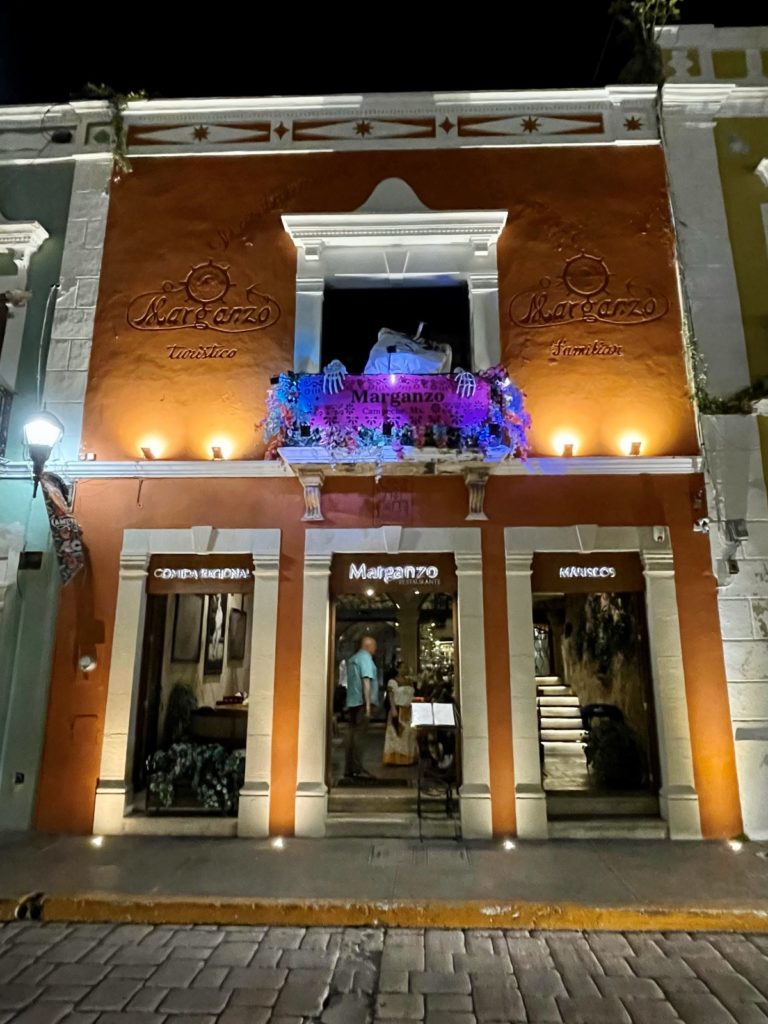
Here began another wonderful and notable culinary evening with seafood the star.
To begin, two cocktail specialties of the house: the hibiscus (Jamaica) mezcal cocktail, and the sour and punchy, passion fruit margarita; both glasses were rimmed with a salty, chili dust to get our tastebuds excited.

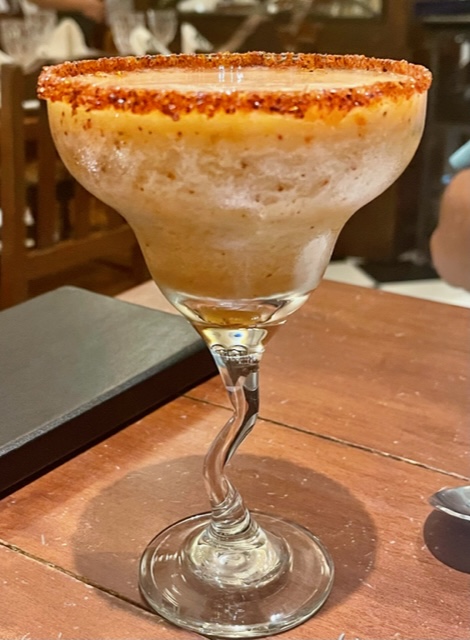
The octopus tostada was very tasty – coated in recado, a dark achiote paste, which is a complex, black charred chile sauce, especially famous in the Yucatán. The char flavor penetrates everything for a distinctive taste.

The seafood soup had a wonderful shrimp base and an incredible aroma.

David’s grilled fish was served in an achiote sauce with pickled onions. It was truly a delicious delicacy.

My ensopado (wet) shrimp and rice brought back memories of my childhood. With its proximity to Cuba from the Yucatán Peninsula, there are several local dishes that are very similar. They, too, love their black beans and fried plantains. How Cuban is that!

Dessert presented a puckery pay de limon (lemon pie) ~ just the way I like it ~ a palate pleasing end to a fantastic meal.
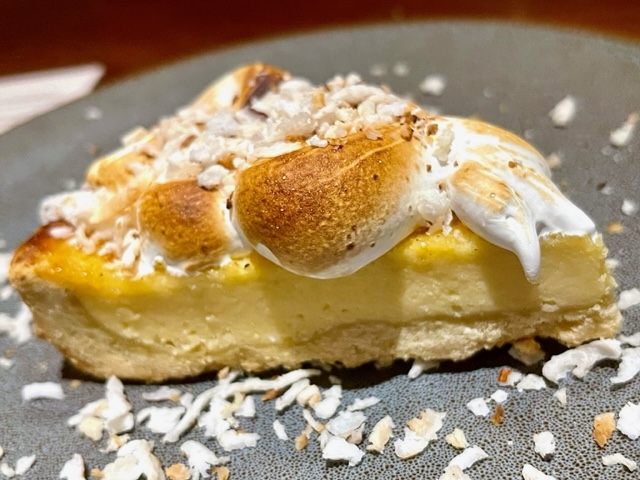
As we walked back to the hotel, passing though the old sea gate, and realizing that once upon a time, walking through this gate would have us plunging into the Gulf!
The “White City” of Mérida awaits us tomorrow, but not before we make a very interesting stop at Pomuch.
Pomuch
I’ve visited many cemeteries during my travels; they’re filled with history and some great art. Some of the sculptures decorating the tombs are worthy of displaying in the world’s best museums, but Pomuch, in Campeche state (pop. 10,000), offers a truly unique and extraordinary experience with theirs.

Each year during celebrations for Day of the Dead, members of the Pomuch community carefully extract bones from their loved ones’ burial niches, and clean them by hand, while they pray, sing or simply talk to their dearly departed.
The ritual, known as Choo Ba’ak, dates to ancient Mayan times and is done after a person has been dead for three years. At this time, their bodies are exhumed from the vaults.
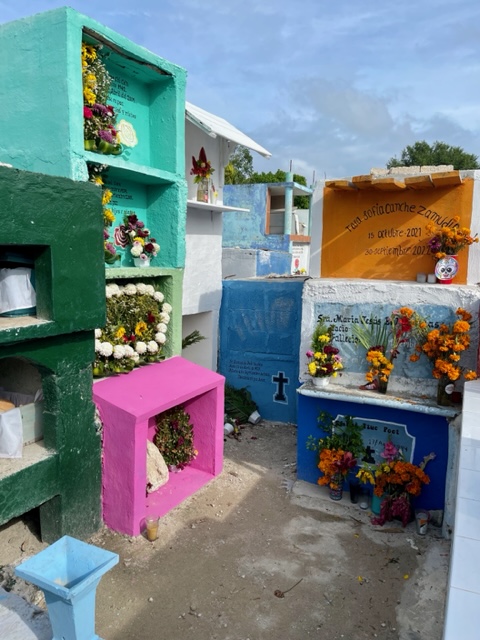
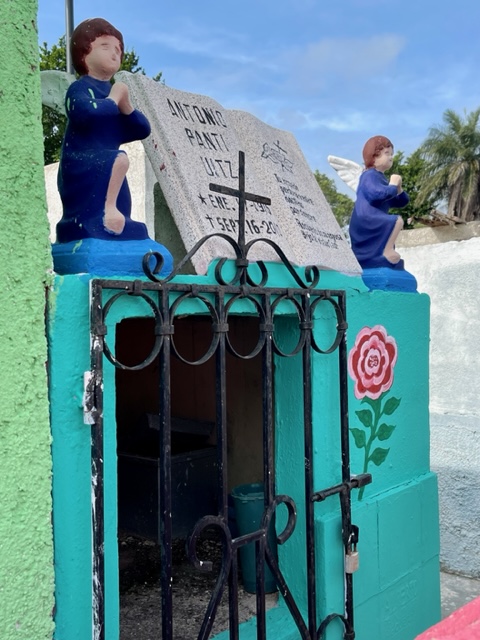
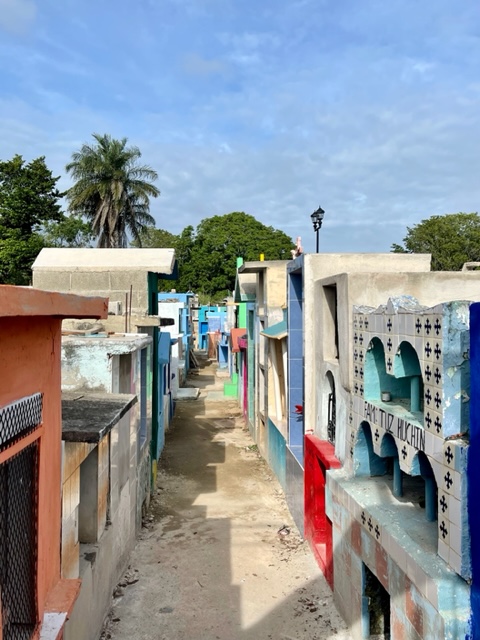
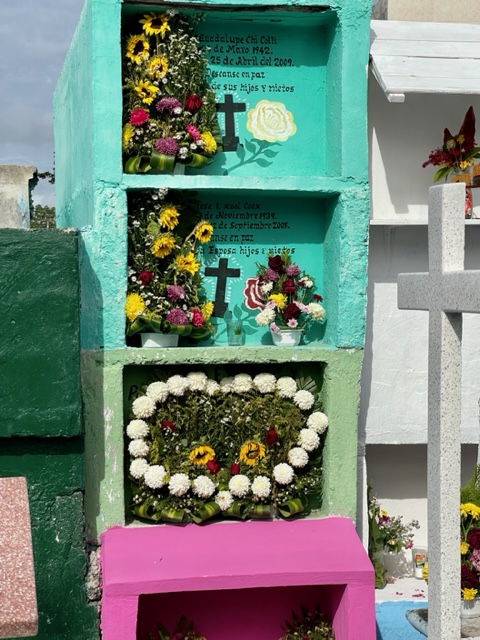
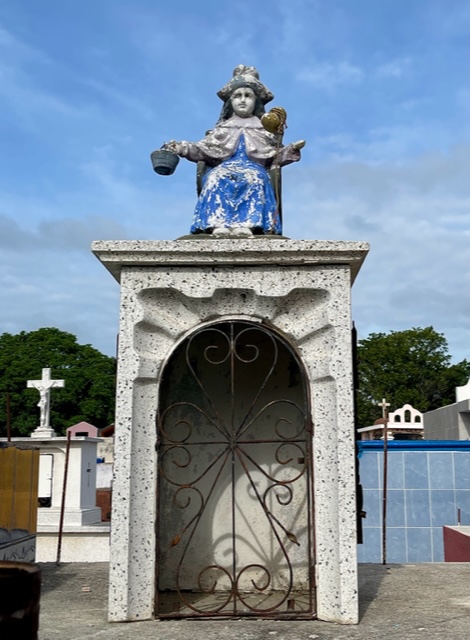


The simple cement niches are stacked up like boxes, some have columns, arches, wrought iron doors and small painted details. The bones are in boxes of all different materials, but they’re partially covered with beautiful, hand-stitched embroidered cloth depicting Mayan motifs, and the name of the deceased.
Most of us will think this is a macabre practice, and when first coming upon the exposed bones, it can be a jarring sight to witness, but if you can appreciate the careful and loving manner in which the bones are placed in their niches, you realize that it’s really a joyful act of remembrance for loved ones.
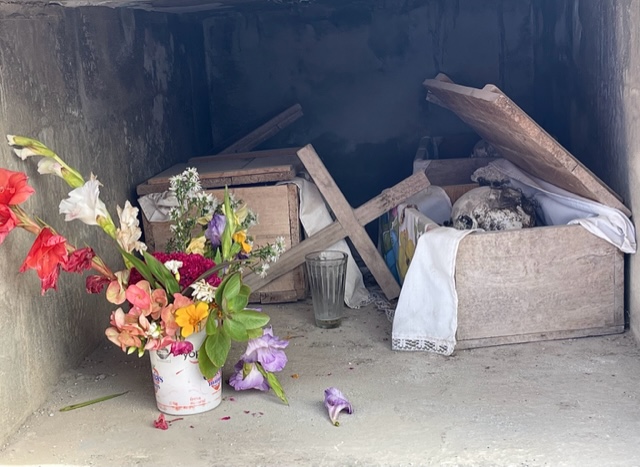

It’s a fascinating peek at another culture’s traditions and the ways humans honor and revere their dead in their respective ways. It’s eye-opening, and yet gives living form of giving life to death.
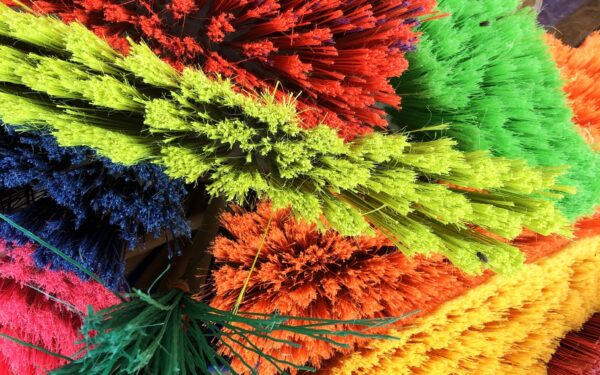

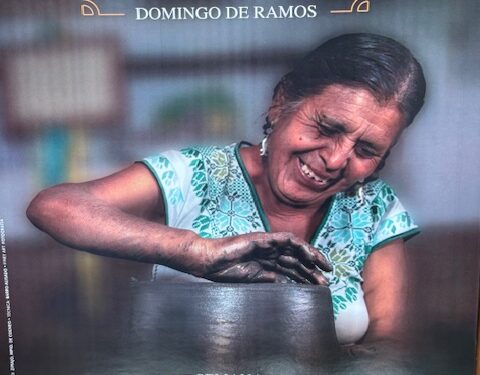
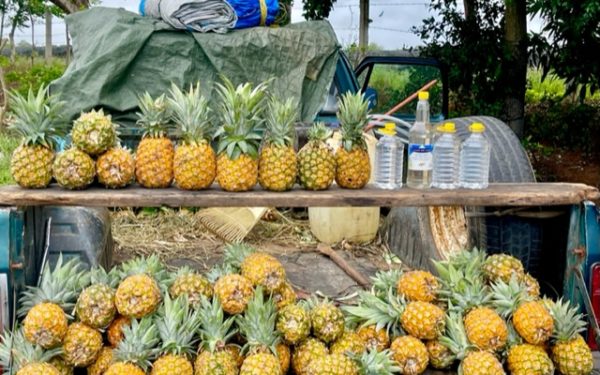
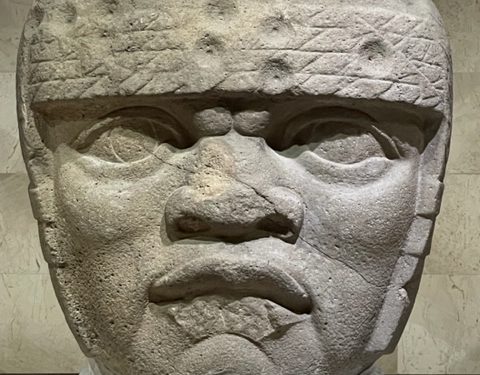
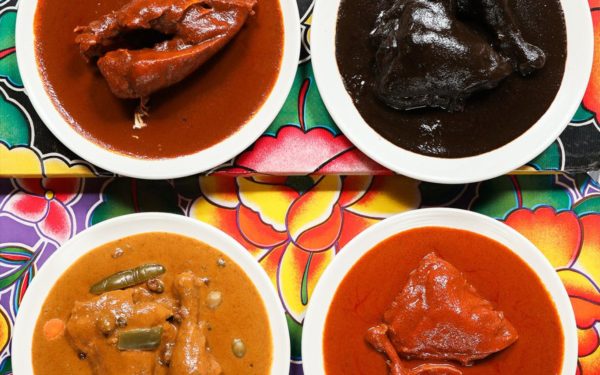
Great photos as usual. Enjoyed the architecture of Campeche, so varied and colorful. The cemetery at Pomuch was fascinating! The food and drinks were mouthwatering as seen in your excellent photos! Looking forward to Merida, a city we greatly enjoyed on our Yucatan trip in 2012.
First photo of the yellow and white building is one of my all-time favorites. Gorgeous! Campeche must have been a joy to wander through. Such well preserved Colonial architecture, brilliant colors and so clean! Also really enjoyed the unique colorful doors.
Cochinita Pibil. I can only imagine how good that must taste. Of course, all the foodie photos are appetizing, but oh! that pay de limon!!
I’d not heard of Pomuch. You’re right, Sergio. At first off-putting, but as with much of Mexican culture, once understood, it becomes beautiful.
Looking forward to Musings de Mérida…
love this place- how far is it from you- just curious- also i WANT that panther or whatever that painted cat is outside on the street- and the food looks so comfort delicious-
another fabulous vicarious taste-
thank you -e